Amidst the green of the little tea garden in front of me I realize that it lacks some of what I love of further west. Here in Hangzhou’s perfectly sculpted tea bushes it feels curated almost and lacking in the slow-speed, slightly chaotic forests of tea trees, thatched roofs and 4 hour meals that my home of a decade has. Also at present I’m feeling the effects of being ‘under-tea’d’. The morning is flat and not enough tea was consumed, so there still remains a slight edge in me.
Frank and I are on a tea sourcing-sipping-meeting of the tea and people voyage and right now in China’s south east we are amidst one of the old classics: Long Jing (Dragon Well) tea. Here, south of Shanghai this slightly organized journey is beginning and though I miss my old home of Yunnan with its sour spice, darker skins, and red-clay soils, I am feeling something that is akin to love. We are not after lore or fantasy; we are after the leaves, how-to’s, and the precious hands (and if not hands, the dreaded machines) of the green leaf. Drinkers of the legitimate kind speak of the vital need to see the source and to meet the creators before judging or buying a tea, particularly one which is so faked, manipulated and lauded.
Our itinerary is flexible but we are intent upon reaching three hubs of tea in China: Hangzhou of the Dragon Well green, Wuyi Shan of Oolong fame, and my haunt of haunts, Xishuangbanna of Puerh fame. It is in this way that we hope to dig a little deeper into how the teas are made, why they are special and of course to settle our own thoughts on them. Both Hangzhou and Wuyi are in the southeast where trains and planes rule and where the science and knowledge bank of teas and culture are huge. Far to our south and west Yunnan’s sub-tropical south and indigenous heartland await where technique is sometimes suspect but where the raw materials and occasional genius stirs the very blood and soul.
Early morning air is cool and apart from my rude thirst all has gone well this morning. In front of me is one of the highlights of the morning. Bald, stooped, and bucktoothed, the figure hunched over the pan of roasting leaves is a character that has already become slightly iconic in the brief time I’ve met him. He is a master maker of Long Jing teas. His ancestors made tea and he and his clan cultivate, harvest, wither, fry, roast and dry teas that according to a local friend are “sold before they are made”. His teas sell for huge amounts and are anticipated because of an unerring adherence to consistency and procedure. He is in a way kind of a deity; a rarefied being in a world that so craves authenticity.
Master Ting sits handling a small artisanal amount of leaves (perhaps amounting to 200 grams) and answers a question I have. “How long do you keep the leaves roasting like this?” Without missing a beat he tells me ambiguously but poetically “My hands know when the leaves are done”. While I wonder at minutes and times he gives me an answer that is genuinely of the earth…or perhaps deliberately ambiguous. It matters not. I equate it with being a chef who’s enduring legacy is that they never reveal one crucial ingredient or stage in producing a masterpiece.
Long Jing’s green flat shape is faked to the point where genuine drinkers will only go to the source or to their particular dealers (who themselves go to the sources) to access the teas. Small green leaves withered, sent through a machine which gently dries and flattens them, then onto the first of three careful small-batch roasts on low heat and then ready. Frank, himself a dedicated drinker of all things ‘tea’ lets out the occasional sound of lust as that very particular kind of creamy green scent is released with the roasting.
Our master’s hands are a calm flowing movement of the leaves gently cupping them up and letting them slip through his fingers. The key here is the low heat, the timing and of course the grade (size) of leaf. Before us he is massaging a batch of end buds which will fetch upwards of $600.00 US for a kg. Whatever methods of consistency he is accustomed to, his eyes gently gleam and he treats the leaves with a caress rather than any piston like efficiency even after all these decades. It is this which is endearing me to him in quick time.
Our fixer Ling has left the little structure where our master works. The extent of this room is about 2.5 metres by 3.5 metres and every single item in the room is dedicated to producing or consuming tea. While nearby Hangzhou disconcerts with its immensity (somehow still attractive), this little village could be described as one of the leaf.
The production of tea stops suddenly and the little master scurries over to a corner to produce two simple water glasses which are filled with a few of the long flat Long Jing leaves. Water is poured (after being boiled and allowed to sit for between 6-9 minutes…he is absolutely detailed in this fact at least) into the glasses and our little light green leaves float and sink.
Loving the potent and vegetal forces of Puerh, I expect that somehow my palate will not be moved by the famed creamy grassiness of the Long Jing. Not so. Though entirely consistent with the almost bakery-like creaminess of the roast, the soft layers do hit the palate in nice soft waves and are distinguishable though there is that slight hankering for a jolting burst of something more encompassing. Not a big matter as within the vehicle that brought us here this morning I have a small tupperware of my sheng (raw) Puerh.
“It is light and should never be bitter. Bitterness should never be part of a Long Jing” we are told by the master who continues with another batch of roasting. Faked and forged, Long Jing’s are some of the most difficult teas to ensure are in fact what they claim to be.
I have been on that vaunted list of being duped and there is no better way to cleanse the soul than to go to the crucible of the stem, leaf, and cup. Now, here, just a meter away from the most legitimate Long Jing I will find, I feel somehow avenged.
Our little master at one point rises and assists in pouring two simple water glasses full of water that have in his words “been boiled and left to sit for 6-9 minutes”. On this point he is clear and without any ambiguity.
Pale yellow liquid remains after our leaves have sunk and sips are taken. The tastes reflect the smells I’ve taken in and our little master stands clearly waiting for the first bits of fluid to be taken. His little wizened figure is stooped but animated and he is like any creator the world over: expectant, sensitive, and competent with a touch of pure confidence in his own ability.
Light wafts of roasted grass come out of the glass. Good, creamy and light but…it lacks the bite I need of a tea. It’s vegetal tangs and strength are hidden somehow and though subtle the cream sensation isn’t enough. A masterpiece perhaps, but tea like so many other subjective elements is as wide ranging as there are mouths and palates and for myself I’ll simply sip back as much of the creamy sweetness as time will allow.
Delicious sweet touches and roasted grass soothes Frank and I but it will not sate. Our master seems content enough to allow us to take in as much as we can and there is that ever so slight urge to pocket some leaves.
Two 50-gram bags do make their way into both Frank and my packs for memories of this little artist and his long flat leaves.
Wuyi Shan’s potent and complicated Rock Oolongs await further south and until then I’ll still be pulling leaves out of my own stash of Sheng Puerh.
Thanking the master there is that desire to thank him for not only being so integral in the life of a leaf but also to thank him for taking the time after so many decades to continue to simply persevere and care.

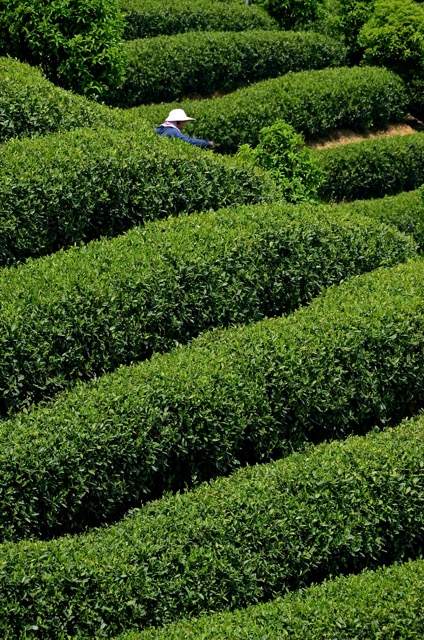
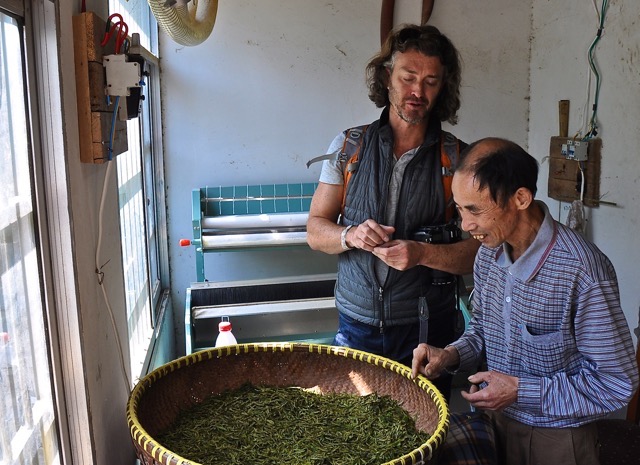
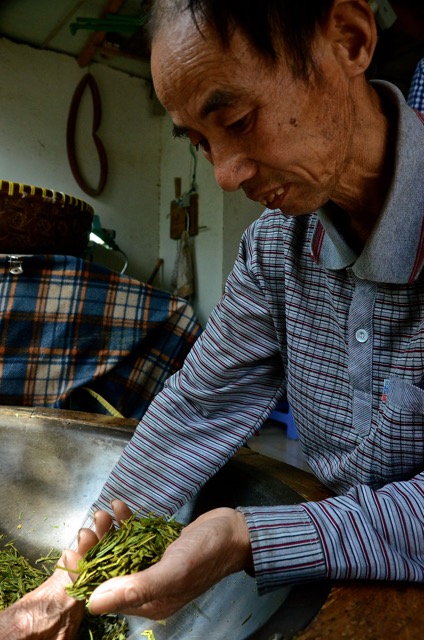
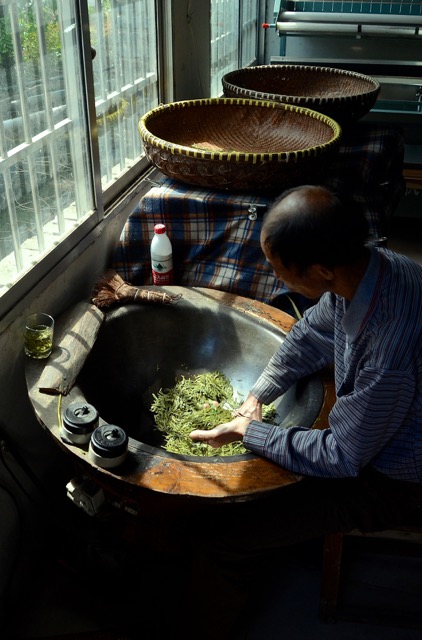
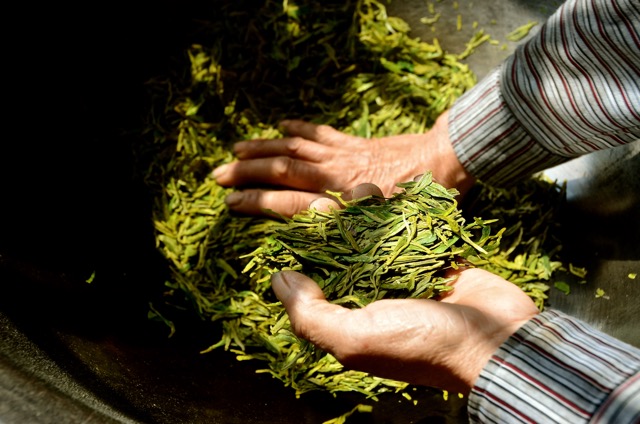
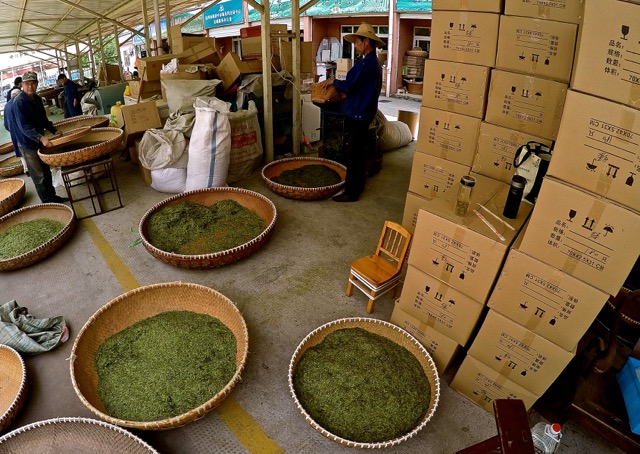
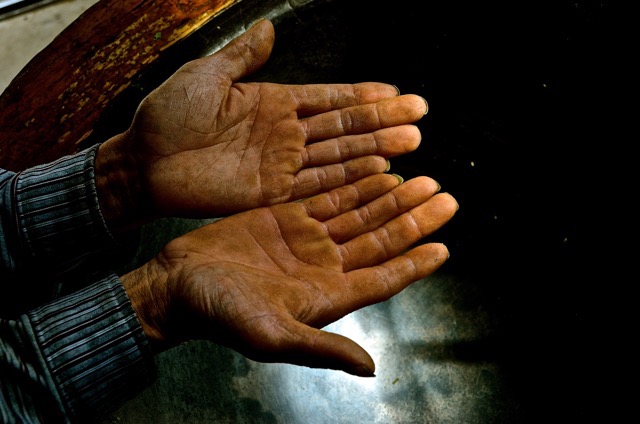
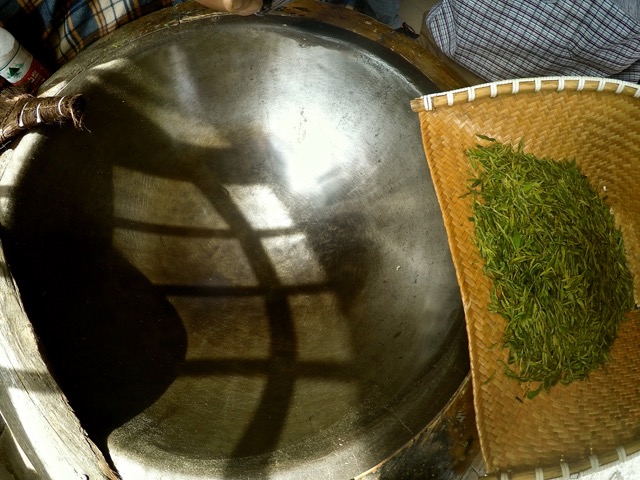
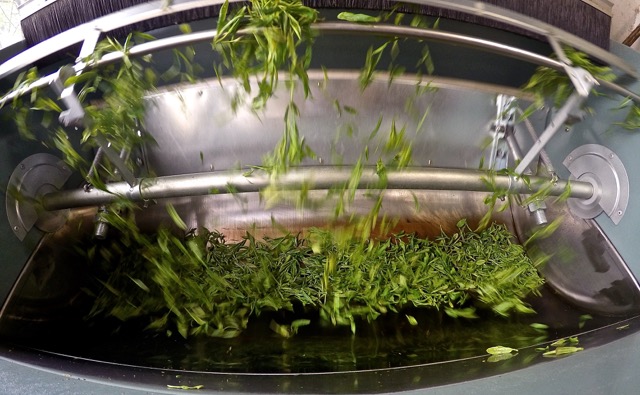
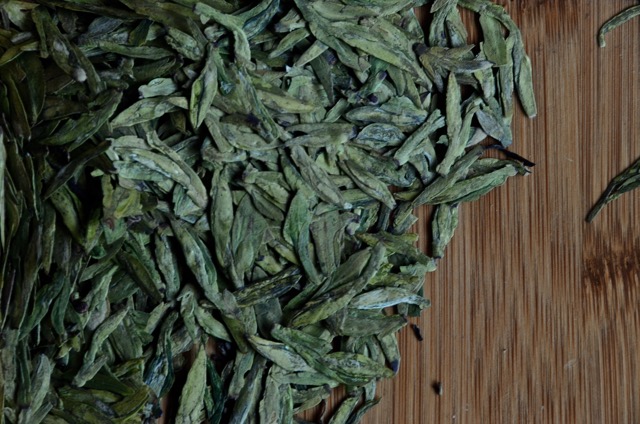

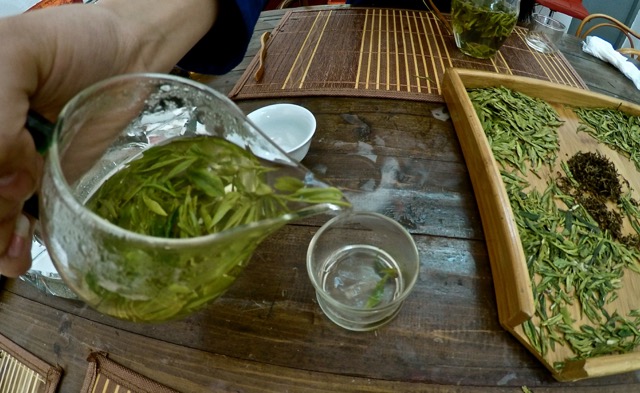
Great story, Jeff. Given your penchant for sheng (and young sheng to boot) I am not surprised that the Longjing was not to your taste.
Tried and tried again Peter. Great teas with a story and done by someone who cares but my palate wandered back to Yunnan.